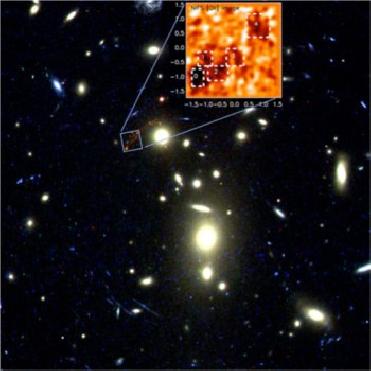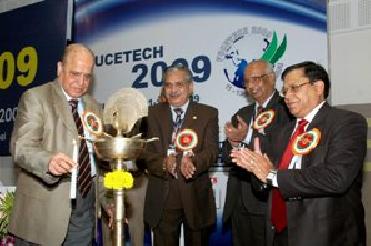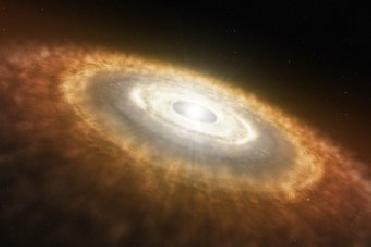
The distant galaxy captured by Gemini North telescope. Image credit: RAS
LONDON (BNS): A team of astronomers studying a distant galaxy at its infant age has concluded that star formation occurred at a much rapid rate in the �stellar nurseries� of young galaxies than previously thought.
In their work which appears in the journal Monthly Notices of the Royal Astronomical Society, scientists from the Durham University have observed the rapid bursts of star formation in the galaxy called MS1358arc.
They looked 12.5 billion years back or about one billion years after the Big Bang to see how the galaxy appeared during its infant years.
Using a technique called gravitational lensing � where distant galaxies are magnified using the gravity of a nearby galaxy cluster � the scientists found that within the star-forming regions, new stars were being created at a rate of about 50 stars per year � around 100 times faster than had been previously believed.
The researchers, who say their work represents the most detailed study of a galaxy at such a young age, believe the observed galaxy is typical of others in the early Universe.
Located 6,000 light years away, the galaxy also has all the characteristics that would allow it to eventually evolve into our home galaxy Milky Way, thereby giving an insight into how our Sun and home galaxy formed.
�The runaway effect in this galaxy suggests it is growing much faster than expected. Given the size of the star forming regions, we would expect it to be forming stars at the rate of about one sun per year, but it seems to be much more active than that,� Lead author of the paper Dr Mark Swinbank said.
Most of the observed stars eventually exploded as supernovae, spewing debris back into space where it formed into new stars.
�We think this galaxy is fairly typical of galaxies at this time and we expect that the Milky Way once looked like this as it formed its first stars.
�In effect we are seeing the first generation of stars being born in a galaxy like the Milky Way. This gives unique insight into the birth of our own galaxy,� the researcher said.
 Previous Article
Previous Article Next Article
Next Article












The Indian Air Force, in its flight trials evaluation report submitted before the Defence Ministry l..
view articleAn insight into the Medium Multi-Role Combat Aircraft competition...
view articleSky enthusiasts can now spot the International Space Station (ISS) commanded by Indian-American astr..
view article